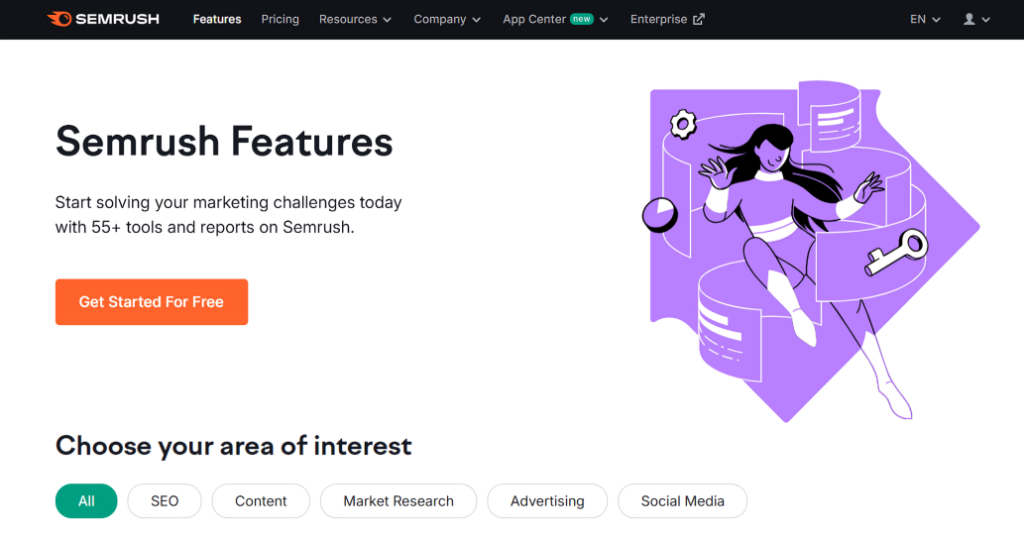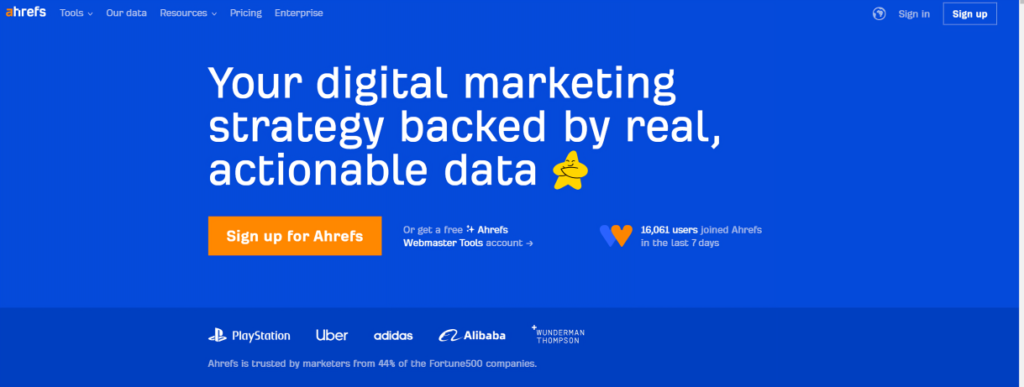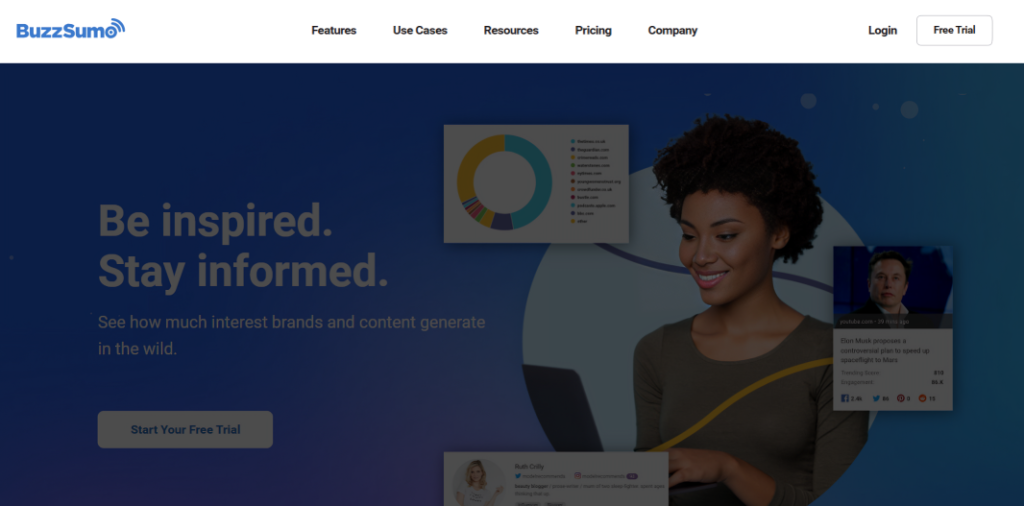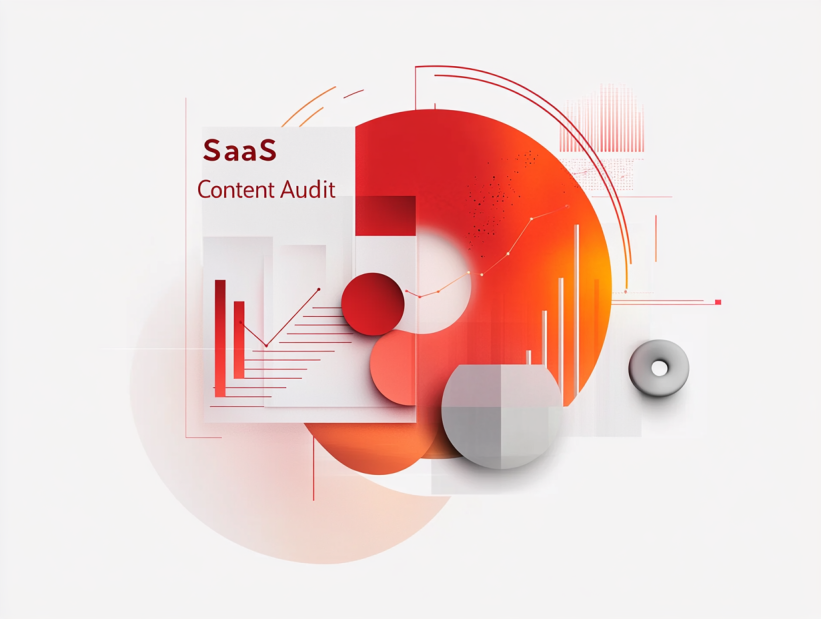What is a B2B SaaS Content Audit?
A B2B SaaS content audit serves the purpose of analyzing all the descriptive material produced by a Software-as-a-Service (SaaS) company to advance its corporate goals. This audit analyzes different types of content, including blog posts, case studies, eBooks, landing pages, and email campaigns, to see how well they attract traffic, keep prospects engaged, and convert leads into paying customers.
Related Article: https://www.adlabz.co/b2b-saas-hubspot-audit-checklist
A B2B SaaS content audit ultimately aims to align your content marketing strategy with your business goals so that every piece of content you produce serves a specific purpose. This process can identify gaps, uncover opportunities, and yield actionable insights on how to optimize your content library. Content audits help SaaS businesses stay ahead of the competition, align with their target consumers, and achieve better marketing ROI.
Table of Contents
Why is a Content Audit Essential for B2B SaaS Companies?
In a highly competitive SaaS environment, content helps people find, engage, and convert prospects. But not every type of content performs equally. To counteract this, some articles may become irrelevant, not connect with your specific target market, or struggle to meet SEO benchmarks. Conducting regular content audits is vital for spotting these problems, and making sure your content is fresh, relevant, and in line with what your audience really needs. Audits can also uncover untapped opportunities (like keywords or topics that you’re not targeting currently) that can enhance your market positioning.
The 6-Step B2B SaaS Content Audit Checklist
Here is how to conduct a B2B SaaS content audit from start to finish: Here’s a step-by-step, six-stage process for conducting an effective audit:
Step 1: Define Goals and KPIs
The first task of your content audit is to establish objectives and key performance indicators (KPIs). So first, clarify what you want to accomplish.
For example, is it about increasing organic traffic, boosting conversion rates, or improving customer engagement?
After defining these goals, use measurable KPIs such as organic traffic volume, bounce rate, time on page, conversion rates, or customer retention metrics. These benchmarks will help you evaluate whether your content matches your business goals.
Step 2: What Content Do You Have?
Your first step is to take a complete inventory of all your existing content assets. Collect data on your content using tools like Google Analytics, Ahrefs, or Screaming Frog. Use a spreadsheet to catalog your findings with fields for the URL, content type (e.g. blog post, landing page, video), publication date, target audience, primary keyword, and performance metrics. Creating a detailed inventory serves two main purposes: The first is to gain a 360-degree view of your content library, and the second is to identify redundant, gap, and underperforming assets.
Step 3: Assess Content Performance
Start by building your content inventory, and then once you have built that, analyze the performance of every single piece of content. Evaluate each asset against your KPIs. Does the content get traffic and ranking for the target keyword? Is it captivating users and driving conversions? For content that’s underperforming, determine if it needs updating, repurposing, or retiring. Alternatively, look for high-performing content that could be further promoted or enhanced to gain the most value from this creation.
Step 4: Analyze Content Gaps
Gap analysis: After assessing your existing content, it’s time to identify gaps in your content strategy by comparing your existing content assets against what you know your target audience needs and what your competitors are giving them. Do any buyer personas or buyer’s journey stages go unaddressed? Is there hot topics or industry changes that you didn’t cover? SEM Rush or BuzzSumo are there specific topics and keywords that your competitors rank for that you do not yet?
Step 5: Map Content to the Buyer’s Journey
Every content piece corresponds to a particular stage of the buyer’s journey (AWARENESS, CONSIDERATION, DECISION). Assess whether your content serves all stages of this journey during your audit. I.e do you have content that educates potential customers? Are there middle-of-funnel nurturing assets like case studies or webinars? Do you offer bottom-of-funnel content, such as pricing guides or testimonials to prompt conversions? Where you’re missing stages the most, strategize on how to fill these gaps!
Step 6: Create an Action Plan
The last step is to develop a priority action plan according to your findings. For every single piece of content, determine whether it should be updated, repurposed, archived, or replaced. Outdated content, on the other hand, could need a refresh with new statistics or an SEO upgrade, for instance. Content that performs well may be repurposed in different formats, like turning a blog post into a video or infographic. Content that doesn’t hold much strategic value can be retired. Also create some new content to fill any gaps you noticed in your assessment. Delegate tasks and establish deadlines for accountability and timely completion of your plan.
How to Craft Content That’s the Right Fit
Producing content that relates to the people you are trying to reach and fulfilling your campaign goals demands such a strategic and audience-centric approach. Here’s how to produce content that resonates with your SaaS audience:
Understand Your Audience
The best content begins with knowing your audience. Prioritize doing persona research to learn about issues your audience has and what they value. This will allow you to normalize surveys, interviews, and analytics data — all to give you the insights needed to create content that answers the problems your audience is looking to solve. The closer you are to knowing who you are targeting the more relevant your content will be and thus more impactful.
Focus on Search Engine Optimization (SEO)
SaaS content needs search engine optimization to find the target audience. Do keyword research to find out what terms your audience is searching for, then incorporate these keywords seamlessly into your content. Key factors such as meta titles, descriptions, header tags, image alt text, or internal linking structures. Optimizing each piece of content well to align with relevant keywords increases the chances of appearing in top search results, increasing organic traffic to your site.
Focus on Data-Driven Content
SaaS buyers are typically analytical and data-driven. Providing statistics, case studies, and customer success stories builds confidence and makes your brand to be seen as a credible source in your niche. Make sure that everything you share is updated, relevant, and from credentialed providers.
Diversify Content Formats
Different formats matter because prospective customers interact with content differently, so it’s important to provide a range. Some individual users, for example, may have more affinity for long blog posts, while others may be driven more toward Google slides or videos. In-depth exploration provides content such as webinars and whitepapers but is more appropriate to get the initial attention of short -videos from social media. Providing a variety of content formats not only expands your reach but funnily enough, you can also recycle content in different platforms to submit multiple formats for the same piece of content.
Maintain Consistent Branding
When your voice and visuals share the same tone, language and look, it earns credibility. Whatever your brand voice is, whether it’s professional, conversational, or thought-leader-like, make sure that it’s applied consistently throughout all content. Maintaining consistently helps strengthen your brand identity and builds trust with your audience.
Offer Value First
Ultimately, the purpose of your content is to instigate conversions but it should focus on offering value to your audience. Avoid relying on a heavy-handed sales agenda, instead focus on teaching, informing, and troubleshooting. Publishing relevant content with your audience in mind earns their trust and showcases your brand as a helpful resource, which, in turn, converts better.
Tools and Resources for a Successful SaaS Content Audit
Some of these insights are the need of the hour and can easily make the auditing more clear and sorted. Google Analytics is one of the most effective tools for tracking your website metrics, which includes traffic, user behavior, engagement level, etc. Analyzing bounce rates, session duration, and conversion data, helps determine which pages are doing well and which ones may need optimizing.
Keyword research and competitive analysis tools to Ahrefs and SEMrush They give you information on which keywords are bringing traffic to your site while also letting you see how your content stacks up against competitors. They can also help you identify content gaps and areas for improvement.

Similar to Ahrefs, Screaming Frog is a health checkup tool that crawls your website in search of technical SEO problems such as broken links, duplicate pages, and missing meta tags to show you how healthy your website is for search engines.

BuzzSumo specializes in examining content performance and trends; it can help you find popular topics and learn your content’s performance across social media platforms. It helps you to develop more compelling and shareable content by showing you what works best for your audience.

Combining these tools makes the content audit process smoother, providing a holistic picture of your site’s positives and negatives.
Common Pitfalls to Avoid During a SaaS Content Audit
When performing a content audit, avoid these common mistakes:
Not Documenting: If you do not document your process and conclusions, it may hinder your others and future duplicates.
Ignoring Bad UX: Content performance isn’t always about SEO or traffic; if your user experience is poor, people won’t engage.
Neglecting Old Content: Not updating or removing outdated content can damage your trustworthiness and SEO rankings.
Having data but not using it: Making decisions without data can lead to making ineffective changes.
Only Volume: It is better to have quality than quantity Better to have a few high-performing pieces than a many mediocre pieces.
Wrapping Up
Conducting a B2B SaaS content audit is an effective solution for you to improve your marketing strategy and better align your content with your business objectives. Following the six-step checklist — define goals, take an inventory of content, evaluate performance, fill the gaps, map to the buyer’s journey, and make a plan — will help you get your content into a systematic process that can improve effectiveness.
Keep in mind that the audit is an ongoing work, not a one-time thing. As your business evolves and market segmentation changes, so will your content requirements. This has made it an important point so without auditing your content regularly your content may be irrelevant at this stage and the topic you once felt was valuable now won’t be and the same goes for the content marketing you felt that aligns with your business objectives, may not even stand suitable for your business right now.
Due to a data-led, audience-focused approach as an editor, you will be able to write content that speaks to your target audience, educates them, and converts them into action, resulting in long-term success for your SaaS product.
You might also be interested:


